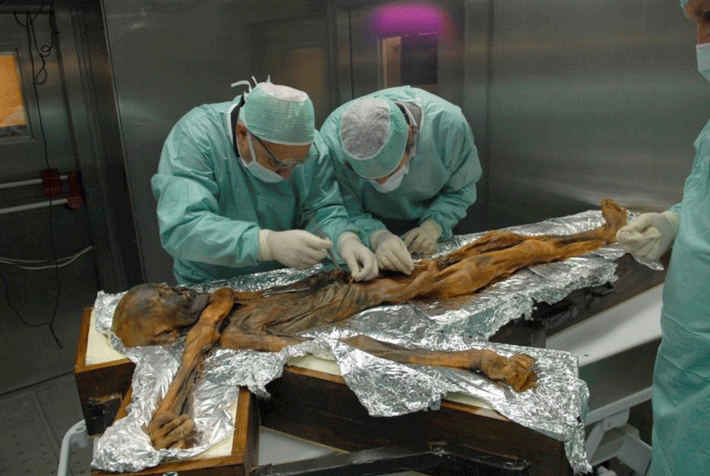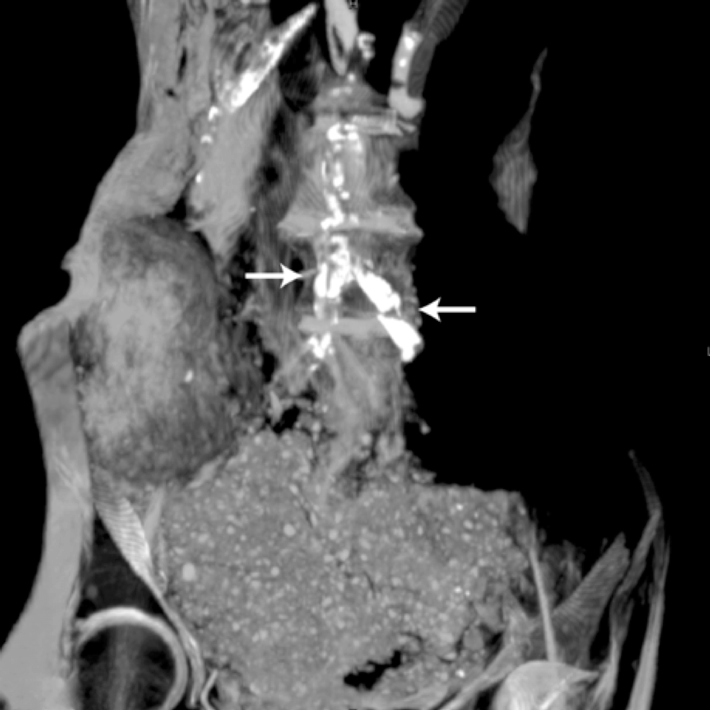Ötzi the Iceman hardly seems the type to have been prone to heart disease. He died violently around 3300 B.C., aged approximately 40 or 50, and his mummified body was found high in the Italian Alps in 1991. He led a vigorous life, ate a balanced diet, and had no access to tobacco. But when researchers put his remains in a CT scanner, they found calcium deposits in a number of his arteries, indicating the beginnings of atherosclerosis, which commonly leads to heart disease. “By the time Ötzi was 80, he would have had a very good chance of having a heart attack or a stroke,” says Gregory Thomas, a cardiologist at Long Beach Memorial Medical Center in California.
Recently, a multidisciplinary team of researchers, co-led by Thomas, examined CT scans of mummies from all over the world—from ancient Egyptians to pre-Columbian Peruvians to nineteenth-century Aleutian Islanders—and found widespread incidence of calcified arteries. They published their results in a series of papers in the journal Global Heart. One study, comparing scans of 76 ancient Egyptian mummies and 178 present-day Egyptians, found similar rates and severity of calcification after adjusting for age. These results are forcing experts to reconsider the long-held assumption that atherosclerosis is caused by uniquely modern habits: lack of physical activity, an unhealthy diet, and smoking. “We don’t know as much about the risk factors for atherosclerosis as we used to think we did,” says Randall Thompson, a cardiologist at Saint Luke’s Mid America Heart Institute in Kansas City, who worked on several of the studies. “There may be other risk factors that have a bigger role than we appreciate.”

(© Samadelli Marco/EURAC)
Ötzi the Iceman undergoing sampling for genetic testing
In addition to genetic factors, the researchers are now considering aspects of premodern living that might have contributed to the findings. For example, Aleutian Islanders, hunter-gatherers who consumed a heart-healthy marine-based diet rich in omega-3 fatty acids, lived in subterranean homes filled with smoke from indoor fires. Three of five mummies scanned had atherosclerosis, and one woman who died around age 50 had coronary artery calcification as severe as that seen in coronary bypass patients, says Thompson. Chronic exposure to cooking-fire smoke may have been a factor.

(Courtesy M. Linda Sutherland MD)
Arterial calcification in Princess Ahmose-Meryet-Amon, a 17th Dynasty mummy from Egypt
The finding of atherosclerosis in mummies from such a wide range of cultures and time periods makes it clear that the disease is not just a modern plague, but a hallmark of humanity. “No matter how much exercise we do, what food we eat, whether we take our medications,” says Thomas, “we are still at risk for atherosclerosis.”
Fuente: https://www.archaeology.org/issues/153-1411/trenches/2608-trenches-mummies-heart-disease